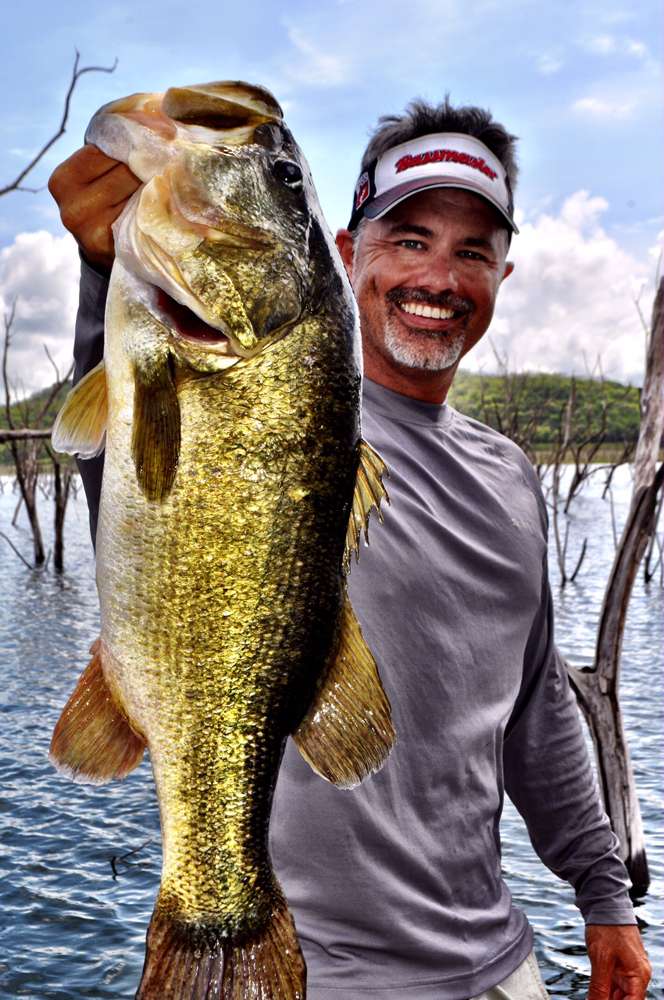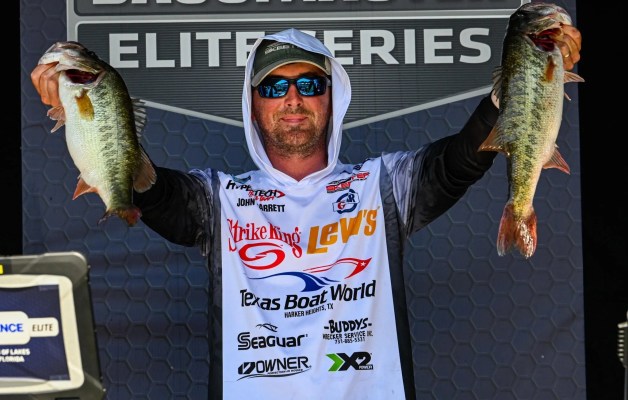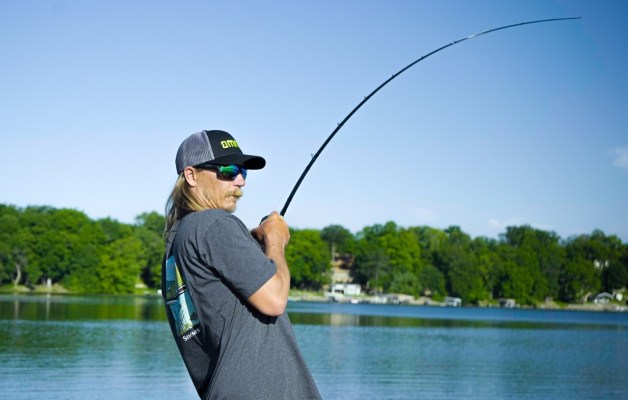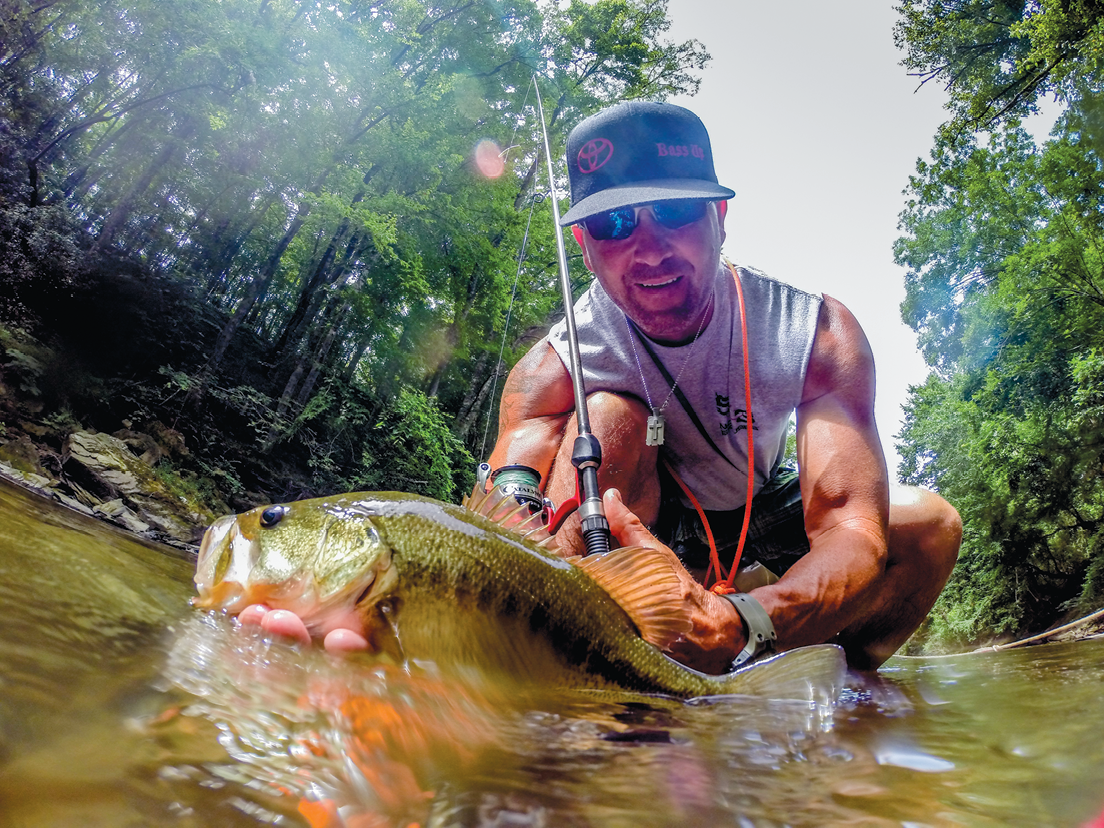
The homemade sugar biscuits were wrapped in aluminum foil and stowed in a knapsack with a Thermos of coffee, a cup for dipping, drinking water and a handful of battered lures. The recession of 1979 was in full swing, but row croppers in Hayden, Ala., couldn’t tell the difference from the economic boom our country experienced several years prior, after the Vietnam War concluded. The sweet biscuits, however, still warm when Dell Swindle wrapped them, would be a feast for kings when it was time for a shore lunch. Her youngest son, Gerald, liked them most.
Gerald Swindle, now one of the most recognizable and likable pros on the Bassmaster Elite Series, often thinks back to the days he fell in love with fishing. It was a small, rural creek, the Locust Fork, where Tommy Swindle, Gerald’s father, instilled in him a passion for the outdoors. The family farm, just a short hike from this stream, is responsible for the work ethic that has vaulted the Alabama native to the upper echelon of competitive bass fishing.
“My family farmed. We were row croppers. That’s how we made money. The food we didn’t sell at the farmers market, we ate. My childhood revolved around helping daddy with the crops — until he took me fishing on the creek the first time,” Swindle said.
Swindle was 10 years old and had fished from the banks of small lakes and ponds, but this little vein of water turned into a source of enchantment. Almost 30 years later, when Swindle drives over the Locust Fork low-water bridge a short drive from his Warrior, Ala., home, he is transported back to a time when fishing wasn’t about competition, and a place that kindled a fire for fishing that still burns hot.
“It’s been nine years since I’ve fished this creek,” Swindle said as we slid a pair of Hobie kayaks into the shallow, clear riffles of the Locust Fork. The last time he visited this childhood haunt, he waded. “Man, I fell down so many times it looked like I had crawled through 20 miles of broken glass. I was beat up, worn out and can’t remember the last time I had so much fun fishing.”
This trip, though, was about reliving his float trips.
“Although Daddy had a little flat-bottom boat, most of the time my butt was wedged in a blown-up inner tube from a front tractor tire, paddling backward like a handicapped penguin. We’d get one day off per week from the farm work, and fishing this creek was our reward.”
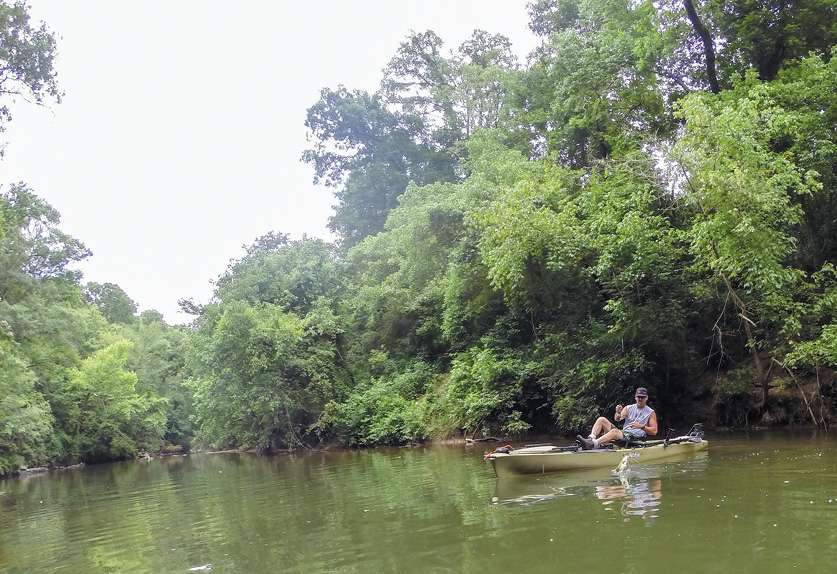
As we started floating slowly with the current, Swindle pointed to a small stickup. “Cast there if you want to go ahead and catch one,” he said.
My cast was half-hearted, and I almost called BS before I sent my lure flying, but I hit close enough to the mark. “I know you are a pro and all, but let’s not get too cocky,” I replied.
And then the fish bit. It was a little spotted bass, scrappy and full of fight from living in an environment of constant current.
“Mmmmm hmm. This river is in my blood. I learned how to fish current right here. I’ve made a million casts along this stretch. It ain’t cocky; it’s home,” Swindle replied.
Little had changed the Locust Fork in 30 years. The deep holes were in the same places. The section of bedrock forming a concrete-like bottom was exactly as he remembered. The bass were small but plentiful.
“After the first couple of trips here with Daddy, I couldn’t get enough of this place.”
Swindle got in the habit of carrying a fishing rod to school with him. After all, the creek bisected the road that led from his farm to the schoolhouse, so why not make a few casts on the way to class — and on the way back home? “I’d sit that rod against the wall outside the school like it was a mandatory school supply. I was known to skip a day or two of classes when the creek was just right. That always ended in a butt-whippin’.”
With only two rods apiece and a tacklebag just slightly larger than a fanny pack, we plied the water. Each bend in the creek seemed to bring back another memory.
“I remember Daddy used to wear me out with a little in-line spinner. It was rusty and all the feathers had fallen off the rear treble, but he’d kick my tail with that bait. If we were making a whole day trip, we’d keep some of the bass. That was free supper for the family — kind of a big deal in those days,” Swindle remembered.
His bait of choice for this trip was a 4-inch soft plastic stickbait that he bit down to 3 inches and fished weightless.
He had four fish to my one when he started explaining the technical aspects of fishing the little creek.
“When you are fishing a small stream, you have to downsize your lures. Baitfish here don’t get big. And more importantly, you have to present it naturally, working the bait slowly downstream with the current. Just watch the little minnows we pass by. They hop out in the current and kind of wash down sideways, trying to find the next rock to hide behind.”
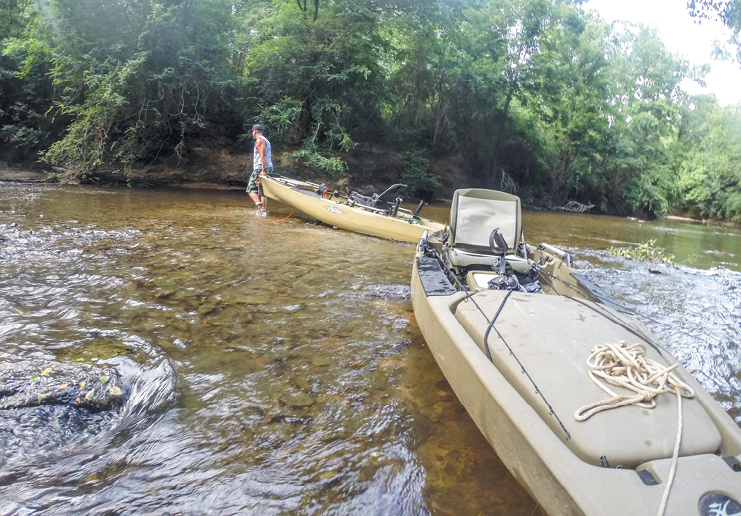
There was only a couple of inches of water in many sections of the Locust Fork. Its superclear water created an aquarium-like atmosphere that became as much of a classroom on fish behavior as a first-rate fishery. Many times we’d see the bass before we’d cast in their direction. And many times we’d watch how they reacted to the bait.
“These little fish might have taught me more than the teachers in that schoolhouse. I learned how bass relate to different structure and cover right here. I learned how to coax a fish into biting right here. And you can take these lessons and apply them to any river situation in the country. I don’t care if it’s the Delaware River or the Red River, bass respond to current in exactly the same way. Those bodies of water aren’t as clear or shallow as the Locust Fork, but all you have to do is visualize what your bait is doing and where those fish set up.”
After portaging over a small sandbar, Swindle pointed to a deep, clear pool featuring an outcropping of rock that created a small bluff on the creek’s west edge.
“See that?” he asked.
“Of course,” I replied, waiting for another nugget of angling gold.
“That is where we’d skinny dip,” he said, a smile crossing his face.
“I could have gone all day without that image,” I replied.
That said, we caught four bass off the bluff wall before paddling past.
Eventually, we pulled the Hobies onto a sandbar and broke out our meager lunches. I went with beef jerky; Swindle had brought some biscuits he’d bought from a local convenience store.
I asked again about his farming roots.
“We did everything by hand, pretty much. Our farm was about 100 acres, and we’d plant vegetables and watermelons. The labor was as manual as you can get, and the work never-ending,” Swindle said. The jobs seemed monstrous for a kid — pulling weeds by hand; plowing, seeding and then harvesting the crops. “We’d work 11-hour days, just to get up and do it again. But I tell you, I wouldn’t change that part of my life for the world.”
Swindle points to the farm work as much as his time on the creek for his success as a professional angler.
“What my daddy couldn’t give to me in money, he instilled in me in work ethic. Hard work sucks, but it won’t kill you. So, when I’m on the lake, I’m thrilled to put in a solid nine hours for five bites. I don’t think I’m that great of an angler, but I have the will to be great.”
Paddling back, we caught a few more bass. With each one, Swindle’s smile seemed to widen just a bit more.
“This right here — it rejuvenates my insides,” he admitted.
As our day ended and we pulled the kayaks up the sandy bank toward the truck, I mentioned bringing my son to the Locust Fork to experience the creek that forged one of the best anglers on the Elite Series.
“I wish all kids could float this little stream because I know it teaches you more than you know how to appreciate at the time. Growing up, I didn’t have video games and all the distractions kids have now. This river was my video game. I had miles and miles of Game Boy — I just had to figure out how to play it.”

